We explore the life of "Che" Guevara, and his travels across South America. In addition, we discuss his main characteristics, and political offices.

Who was "Che" Guevara?
Ernesto Guevara, more commonly known as "Che" Guevara, was an Argentine-Cuban politician and revolutionary. He was also a journalist, writer, and military figure.
Che Guevara played a major role in the Cuban Revolution (1953-1959) led by Fidel Castro. He emerged as one of the most prominent revolutionary leaders of Cuba at the time, alongside Fidel and Raúl Castro, Huber Matos, and Camilo Cienfuegos.
Guevara remains a controversial figure, celebrated by some while rejected by others. This is due to his participation as a promoter of communist guerrillas in various Third World countries. His activism established him as a worldwide icon of the Revolutionary Left and the anti-imperialist struggle.
The portrait of Che Guevara, captured by photographer Alberto Korda (which illustrates this article), is one of the most famous and most widely reproduced in the world. While often used in alignment with its original ideological context, his image has also been subject to reinterpretations, cultural appropriations, and merchandising, including clothing, hats, and posters.
- See also: Nelson Mandela
Birth of Che Guevara
Ernesto Guevara was born in Rosario, Argentina, on June 14, 1928.
He was the eldest of five children born to Ernesto Guevara Lynch and Celia de la Serna, both of whom belonged to the Argentine aristocracy.
By some accounts, Che would be a descendant of José de la Serna e Hinojosa, the last Spanish Viceroy of Lima.
Che had an affluent childhood, though it was plagued by frequent bouts of asthma.
He had access to books and cultivated his interest in both adventure novels and poetry. He later studied medicine at the University of Buenos Aires. There is no known record of him being actively involved in student movements or in Peronism, a movement for which, nevertheless, he had a liking.
Travels across South America

Che was an enthusiastic traveler, and had the firm idea of touring Latin America and getting to know it more closely, far from the traditional tourist circuits. Thus, in 1950, he embarked on a journey through northwestern Argentina, alone, riding a Cucciolo brand motorcycle, which would be a prelude to his extended trips throughout the continent.
- First Latin American trip. In 1952, Che and his friend Alberto Granado embarked on a seven-month motorcycle trip. They set off from Córdoba (Argentina) heading south, entering Chile through Patagonia, and then traveled all the way to the North. They ventured into Peru, exploring Cusco, Machu Picchu, and the Sacred Valley of the Incas. They then visited Lima, Iquitos, and flew by seaplane to Bogotá, during Colombia's tumultuous period. From Bogotá, they traveled by bus to Caracas. Ernesto then returned to Buenos Aires, making a stopover in Miami.
- Second Latin American trip. Between 1953 and 1954, Che undertook his second trip, this time with his childhood friend Carlos Ferrer. The objective was to return to Caracas and reunite with Alberto Granado. They departed from Buenos Aires by train to Bolivia, staying in La Paz amidst the 1952 revolutionary period. They then repeated the route throughout Peru (Cusco, Machu Picchu, Lima), and from there took a bus to Guayaquil, Ecuador. At this point, they changed the course of the journey: Ernesto resolved to witness the Guatemalan Revolution led by Colonel Jacobo Arbenz. Therefore, he parted ways with Carlos, heading to Panama, followed by Costa Rica, Nicaragua (hitchhiking), Honduras, and El Salvador. He finally arrived in Guatemala, where he stayed for a little over nine months.
Relationship with Fidel and Raúl Castro
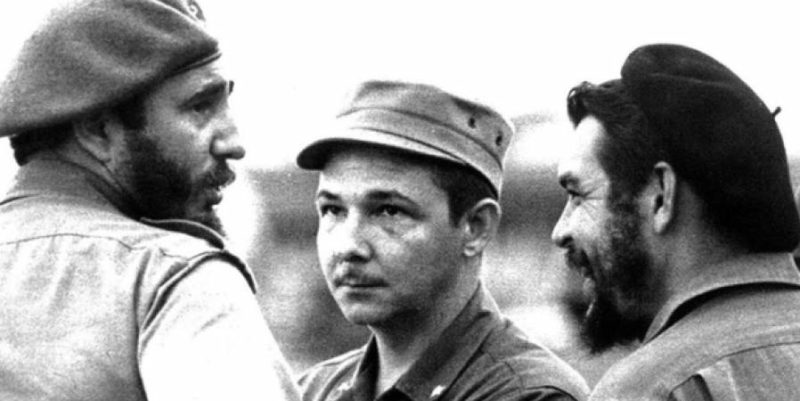
Che met the Castro brothers in Mexico, where he had been living for two years, since 1954. He soon joined the 26th of July Movement, which Fidel Castro and his brother Raúl (a fervent communist militant) were promoting in order to retake the island of Cuba from the dictatorial regime of Fulgencio Batista.
His friendship with the Castros lasted many years, and was consolidated by guerrilla warfare and revolutionary activism, leading Che even to hold public offices in the Cuban revolutionary government, where he was regarded as a man of highest trust.
Participation in the Cuban Revolution
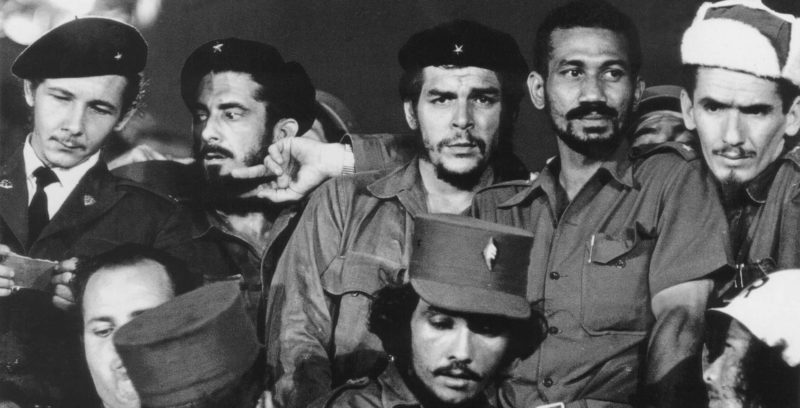
Che was among the ranks of the Cuban revolutionary guerrillas following the landing of the Granma in the Gulf of Guacanayabo. He remained with the "barbudos" (bearded ones) during the three years they resisted in the Sierra Maestra mountains, in the south of the island.
During this period, he acted as a combat medic and as commander of the "Fourth" Column (in fact it was the second), which he named the "descamisados" (shirtless ones), paying homage to the term used by Eva Perón. In 1958, he set up Radio Rebelde (Rebel Radio), a clandestine radio station aimed at mounting resistance against the dictatorship.
Following the triumph of the Revolution, Guevara participated in the summary trials of officials of the dictatorship deemed war criminals. Many of these trials resulted in executions by firing squads.
Hundreds of people were sentenced in these "revolutionary trials", whose hearings were public. The trials were openly endorsed by Che, who presided over the revolutionary court of justice.
Official positions in Cuba
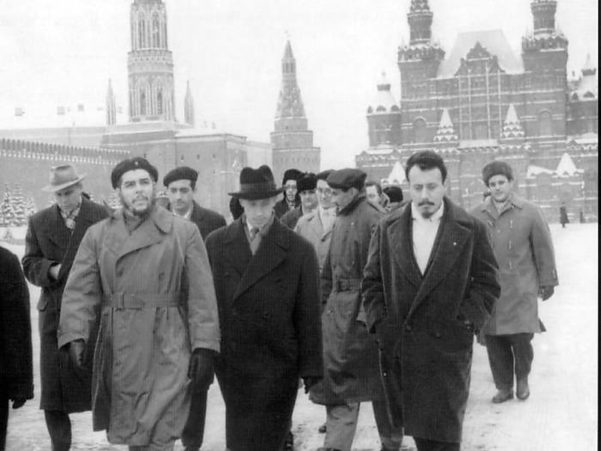
Guevara participated in the crafting of the agrarian reform laws, in the creation of Prensa Latina (an international revolutionary news agency), and as ambassador of the Revolution, undertaking diplomatic missions to other Third World countries. In all these unofficial positions he proved to be a supporter of the most radical stances.
Later, amidst a context of international polarization and threat, he was charged with organizing the Department of Industrialization of the INRA, which later became the Ministry of Industry. In 1959, he was appointed President of the National Bank of Cuba, during which time his signature appeared on banknotes bearing his nickname: "Che".
While in these positions, he advocated the expropriation and nationalization of private industries and the planning of a centralized economy. He subsequently served as a diplomatic envoy on missions to China and the USSR.
Internationalization of the Revolution
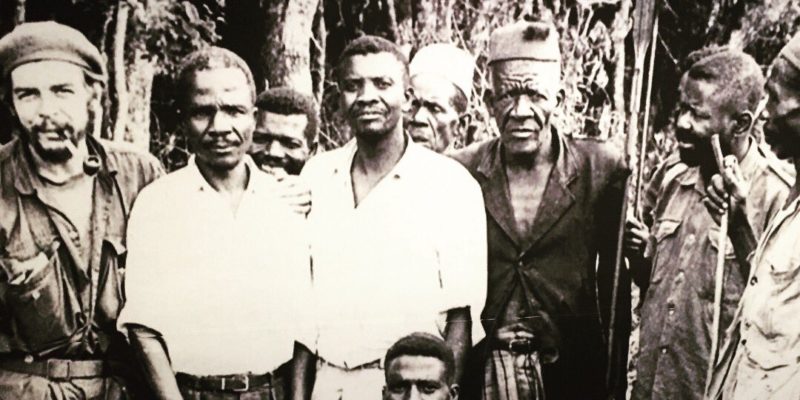
Che Guevara, like many communists, considered the Revolution to be an international affair. Armed insurgency was promoted in Guatemala, Nicaragua, Peru, Colombia, Venezuela, and Argentina, most of which failed.
Despite the opposition of local communist parties, Che deemed the internationalization of the Revolution urgent and necessary. This conviction eventually led him to leave Cuba in late 1964, after renouncing his public offices and Cuban nationality.
His first destination was the Democratic Republic of the Congo in Africa, where the mission was a resounding failure. After a brief and secret return to Cuba, Che decided to undertake a guerrilla insurrection in Bolivia, where he arrived in 1966.
Death of Che Guevara
Following his arrival in Bolivia, Che Guevara was wounded in combat and captured by the forces of the Bolivian military dictatorship of René Barrientos, which was supported by the CIA.
While on October 9, 1967 it was publicly announced that he had died in combat, it is now known that he was executed, and that the order for his execution was given at noon on that same day. The role of the United States in that decision remains unclear, with various versions accounting for it.
Honors and recognition
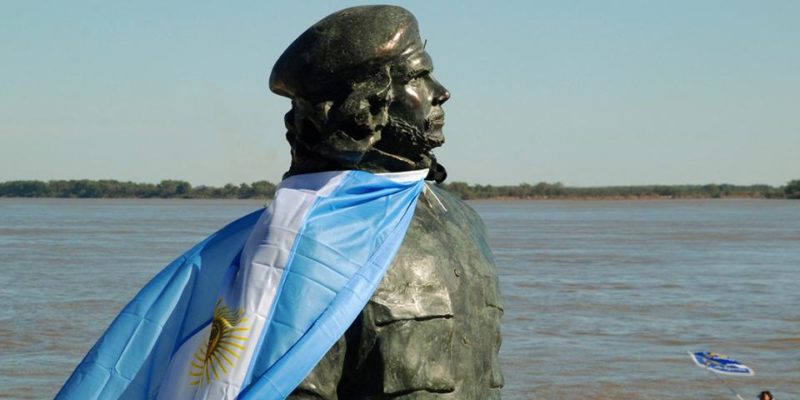
Among the numerous orders and honors awarded to Che are:
- Order of the Republic, Egypt, 1959.
- Order of the White Lion, First Class, Czechoslovakia, 1960.
- Grand Cross of the National Order of the Southern Cross, Brazil, 1961.
- Order of the Great 1st September Revolution, Libya, 1990 (posthumous).
- Posthumously declared an illustrious citizen of Rosario in 2002.
- Order Augusto César Sandino, first class: Battle of San Jacinto, Nicaragua, 2008 (posthumous).
Ideology of Che Guevara
Che's thought is often encompassed under the label "Guevarism". It is a fusion of anti-imperialism, Marxism, and communism, in which armed struggle played a fundamental role.
Vital to his ideology was the peasantry, agrarian reform, and rural struggle, setting him apart from the more working-class centered European Marxisms and aligning him closer to Maoism. He valued the individual ethics of the revolutionary, which should motivate the individual towards solidarity and the common good.
Che Guevara quotes
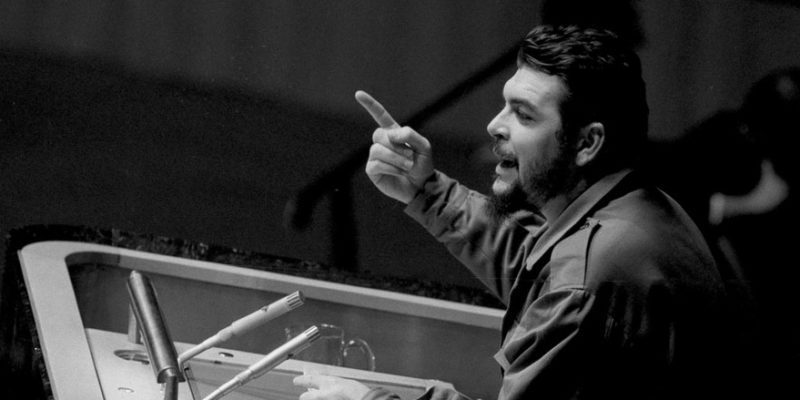
- "Better to die standing, than to live on your knees."
- "The true revolutionary is guided by great feelings of love."
- "If I go forward, follow me; if I stop, push me; if I go backward, kill me."
- "If you tremble with indignation at every injustice, then you are a comrade of mine."
- "Capitalism is the world's most respected genocide."
References
- “Che Guevara” en Wikipedia.
- “Che Guevara [Ernesto Guevara]” en Biografías y vidas.
- “El Ché Guevara: de profesión, líder revolucionario” en Muy Historia.
- “¿Quién fue el Che Guevara?” en Telesur.
- “Che Guevara (Argentine-cuban revolutionary)” en The Enciclopaedia Britannica.
- “Ernesto ‘Che’ Guevara” en The History Channel.
- “El Che” por José Miguel Jiménez en Revista Margen Cero.
Explore next:
Was this information useful to you?
Yes NoThank you for visiting us :)